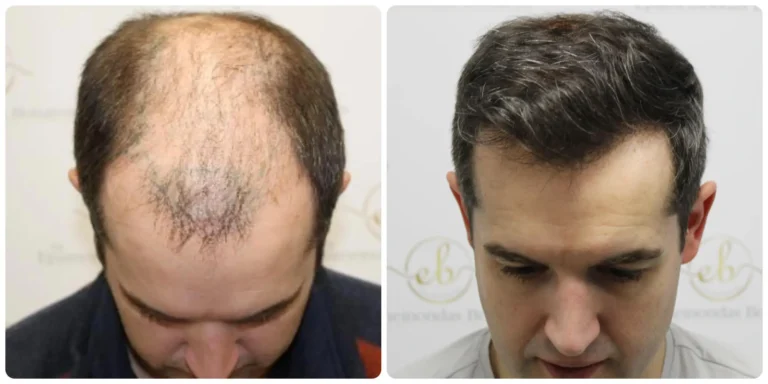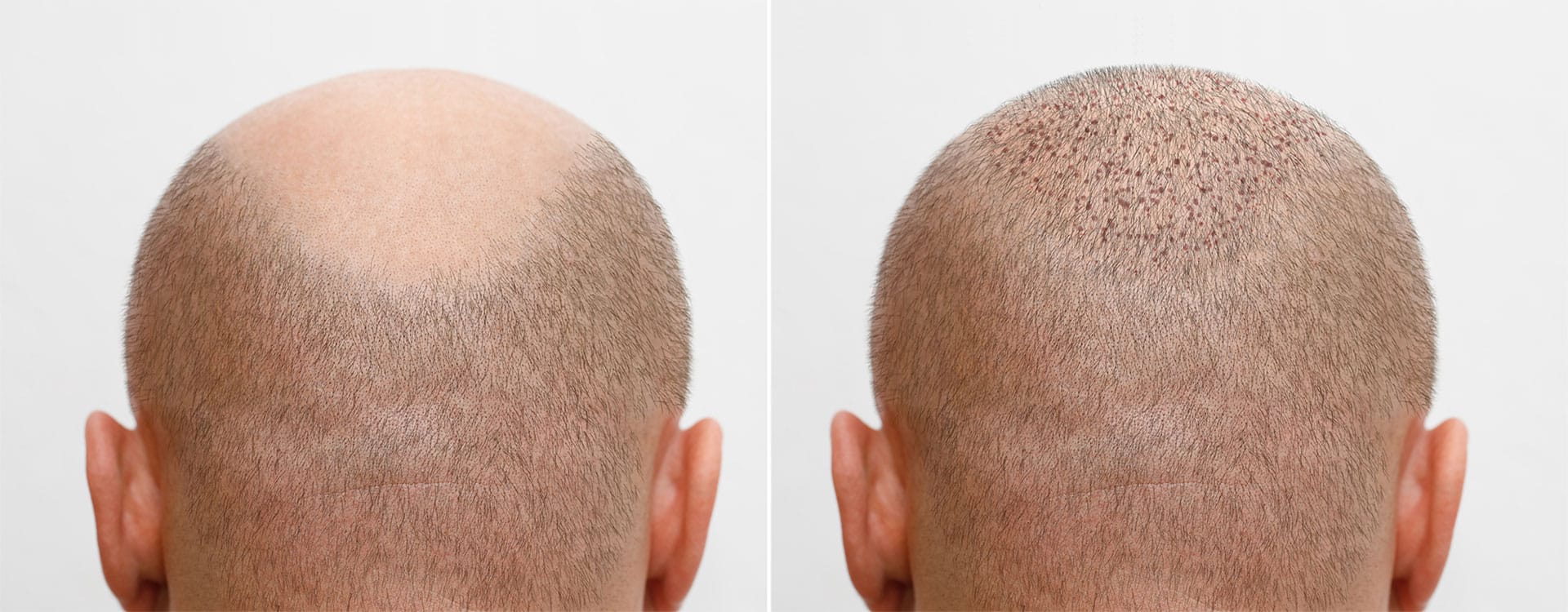What is Hair Transplant?

Hair loss can affect people of all ages and backgrounds. It’s a challenge that many people face, whether it’s due to genetics, aging, or other factors. The search for effective solutions to hair loss has led to the development of hair transplants, which have been improving for many years. However, as we move into the future, new technologies and approaches are transforming the way we think about hair restoration.
In this article, we will explore the future of hair transplant technology, including what’s coming in 2025 and beyond. We will look at new techniques, advancements in science, and the potential for groundbreaking treatments that could change the game for hair restoration.
Before we dive into the future, it’s important to understand what hair transplants are. A hair transplant is a surgical procedure where hair follicles from one part of the body (often the back of the head) are moved to an area where hair is thinning or missing. These follicles are carefully relocated to provide fuller, thicker hair where it’s needed most.
Traditional hair transplant techniques, like FUE (Follicular Unit Extraction) and FUT (Follicular Unit Transplantation), have been successful for many people. However, these methods still have some drawbacks, such as visible scarring and a long recovery period.
So, what’s next for hair transplants in 2025 and beyond? Let’s take a closer look.
The Future of Hair Transplant: New Technologies on the Horizon
The future of hair transplant technology holds great promise, driven by advancements in AI, robotics, and regenerative medicine. AI and machine learning will enhance precision in graft placement, optimizing results tailored to each patient’s unique hair growth patterns. Robotics will streamline the process, reducing human error and improving consistency. Additionally, stem cell research and tissue engineering could lead to breakthroughs in hair regeneration, offering more natural and lasting solutions. As techniques evolve, we can expect faster recovery times, minimally invasive procedures, and more affordable treatments, making hair restoration accessible to a wider population with higher success rates.
1. 3D-Printed Hair Transplants: A Game-Changer in Hair Restoration
One of the most exciting developments in the world of hair restoration is the rise of 3D-printed hair transplants. While still in the early stages, 3D printing technology is poised to change the way hair transplants are performed. Instead of harvesting hair follicles from a donor site, scientists are exploring the possibility of printing hair follicles using specialized bio-inks.
These bio-inks contain human cells, allowing the printed hair follicles to integrate seamlessly with the scalp. This method could reduce the risks associated with traditional hair transplants, such as scarring and the need for long recovery times. Furthermore, 3D printing could make it possible to customize hair transplants based on an individual’s unique needs, creating more natural-looking results.
2. Robotic Hair Transplants: Precision at Its Best
The future of hair transplant surgery is also leaning towards the use of robotics. Robotic hair transplant systems, like the ARTAS robot, are already being used to perform more precise and efficient hair transplants. In the future, robotic systems are expected to become even more advanced, offering greater accuracy and speed.
These robots use artificial intelligence (AI) and high-tech cameras to map the scalp, identify the best donor follicles, and perform the transplant with incredible precision. With robots taking over some of the manual tasks, human surgeons can focus on the overall planning and decision-making, leading to more consistent and natural results.
3. Stem Cell Hair Restoration: Regrowing Hair from the Roots
Another promising future development in hair transplants is stem cell hair restoration. Stem cells have the unique ability to regenerate damaged tissues, making them an exciting option for regrowing hair. In the future, stem cells may be used to stimulate dormant hair follicles and encourage them to grow new hair.
Researchers are already studying how stem cells can be used to treat hair loss, and early trials have shown promising results. By using stem cells to promote hair growth, doctors could potentially offer a solution that doesn’t require transplants from other parts of the body. This treatment could be particularly beneficial for individuals who don’t have enough donor hair for
The Role of Artificial Intelligence and Genetics in Hair Transplants

AI plays a transformative role in genetic hair transplant by enhancing precision and customization. Through advanced algorithms, AI can analyze genetic data to identify individual hair loss patterns and predict how hair follicles might respond to treatment. This enables more personalized approaches to hair restoration, as AI can tailor transplant plans based on a person’s unique genetic makeup. Additionally, AI aids in the analysis of donor hair quality and optimal graft placement, ensuring better density and natural results. As AI continues to evolve, its integration with genetic science may lead to even more effective, long-lasting solutions for hair restoration.
1. AI-Driven Hair Transplants
Artificial intelligence is transforming many areas of medicine, and hair transplants are no exception. In the future, AI will play a significant role in planning and executing hair transplant procedures. AI-powered systems could analyze a patient’s scalp and hair pattern, identifying the most effective transplant plan.
By using AI, hair transplant surgeries could become more accurate and efficient, with fewer errors and a greater chance of success. AI could also help predict the future hair loss patterns of a patient, allowing doctors to recommend the best treatment options for long-term results.
2. Genetic-Based Hair Restoration
As our understanding of genetics continues to grow, scientists may be able to develop genetic-based hair restoration techniques. In the future, it may be possible to use a patient’s genetic information to design a personalized hair restoration plan. This could include the use of stem cells or genetic modifications to regrow hair in a way that aligns with the person’s unique genetic makeup.
3. Hair Cloning: A Bold Step Forward
One of the most exciting possibilities for the future of hair transplants is hair cloning. Scientists are working on ways to clone hair follicles, which would allow for an endless supply of hair for transplants. While this technology is still in its early stages, it holds the potential to revolutionize hair restoration by providing a limitless source of hair follicles for patients with severe hair loss.
The Impact of Future Hair Transplants on the Hair Restoration Industry
The impact of AI on hair transplant procedures is revolutionizing the industry, offering enhanced precision and efficiency. AI-powered algorithms analyze vast amounts of data, allowing for more accurate assessments of hair loss patterns, donor hair quality, and graft placement. This leads to highly customized and natural-looking results. AI also improves surgical precision, reducing the risk of human error, minimizing scarring, and optimizing the overall outcome. Additionally, AI enables faster recovery times and more effective post-operative care through predictive analytics. As the technology advances, it promises to make hair transplants more accessible, affordable, and successful for a broader range of patients.
1. Lower Costs
As newer technologies like robotic hair transplants, stem cell treatments, and AI-driven procedures become more common, the cost of hair restoration may decrease. With more efficient and effective methods, patients could see lower prices for hair transplant procedures, making hair restoration more accessible to a wider audience.
2. Global Accessibility
In the future, hair transplants may become more accessible to people worldwide. As new technologies become less expensive and more widely available, individuals in different parts of the world may be able to benefit from advanced hair restoration methods. Whether in the U.S., Europe, or developing countries, the future of hair transplants holds promise for people everywhere.
.

What to Expect in 2025 and Beyond
The future of hair transplants is filled with promise. By 2025 and beyond, we can expect to see more advanced technologies, such as 3D-printed hair, robotic surgeries, stem cell treatments, and possibly even hair cloning. These innovations will make hair restoration procedures more precise, natural-looking, and accessible to more people.
With faster recovery times, less scarring, and customizable results, the future of hair restoration will likely be more efficient, affordable, and less invasive than ever before. Whether you’re struggling with hair loss or simply curious about what’s next, the future of hair transplants is brighter than ever.
Conclusion
The future of hair transplants is evolving rapidly. With the rise of cutting-edge technologies like 3D printing, robotics, and stem cell treatments, we are entering a new era of hair restoration. These advancements promise to make hair transplants faster, more affordable, and more natural-looking than ever before.
As we move into 2025 and beyond, it’s clear that the future of hair restoration is filled with exciting possibilities. If you’ve been considering a hair transplant or struggling with hair loss, now is the time to keep an eye on these new developments. The future of hair restoration is right around the corner.
.

